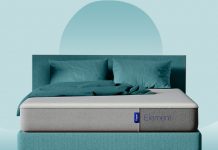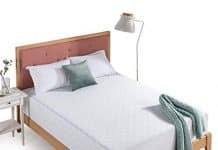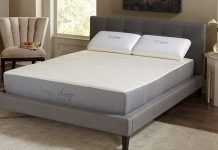Picking the perfect mattress for your little one can often feel like navigating through a maze of options. With countless sizes, materials, and features to consider, it’s easy to get lost in a sea of information. But fear not, because we are here to simplify the process and help you make the best decision for your child’s comfort and well-being. In this article, we will guide you through the factors to consider when selecting a mattress, from size and support to durability and safety, so you can rest easy knowing your little one is sleeping soundly.
Review contents
Age of the Child
Infant
When choosing a mattress for an infant, it is essential to prioritize their safety and comfort. Infants require a firm mattress to support their developing bones and reduce the risk of suffocation. Look for a crib-sized mattress that fits snugly into the crib to prevent any gaps where the baby could get trapped. Additionally, consider a waterproof cover to protect against accidents and spills.
Toddler
As your child transitions into the toddler years, their sleep needs change. While the mattress should still provide firm support, a toddler mattress can be slightly softer to provide added comfort. A twin-sized mattress is a popular choice for toddlers as it offers more space to grow. Look for a mattress with edge support to prevent your little one from rolling off during the night.
Child
As your child grows older, their mattress needs may change again. A medium-firm mattress is often a suitable option for children of all ages. It offers a combination of comfort and support, ensuring a restful night’s sleep. A twin-sized mattress remains a popular choice for children, but if you have the space, you may consider upgrading to a larger size like a full or queen.
Mattress Size
Crib
For infants and young babies, a crib-sized mattress is a must-have. These mattresses are designed to perfectly fit into standard-sized cribs, ensuring a snug and secure sleeping environment. The dimensions of a crib mattress typically measure around 28 inches in width by 52 inches in length. It’s important to choose a mattress that fits tightly into the crib to prevent any gaps that could pose a safety hazard.
Twin
As your child grows older and moves into a bed of their own, a twin-sized mattress is a popular choice. These mattresses typically measure around 38 inches in width by 75 inches in length, providing ample space for a child to sleep comfortably. Twin mattresses are also a practical option if you have limited space in your child’s room or are looking to save on costs.
Firmness Level
Soft
While soft mattresses may provide a plush and cozy feel, they are generally not recommended for children. Infants and young children require a firmer mattress to ensure proper spinal alignment and support for their growing bodies. However, as your child enters the toddler years, a slightly softer mattress can be considered for added comfort while still maintaining a firm level of support.
Medium
A medium-firm mattress strikes the perfect balance between comfort and support for children. It provides enough softness to ensure a comfortable night’s sleep while offering the necessary support to maintain proper spinal alignment. A medium-firm mattress is often a versatile choice that accommodates children of different ages and sizes.
Firm
Firm mattresses are typically recommended for infants and young children. They provide the necessary support to promote proper spinal alignment and reduce the risk of suffocation. A firm mattress ensures that a child’s body weight is evenly distributed, preventing any sagging or discomfort. While firm mattresses may not be as cushy as softer options, they offer the necessary stability and support for growing bodies.
Support and Alignment
Spinal Alignment
Proper spinal alignment is crucial for a child’s growing body. A mattress that supports the natural curvature of the spine promotes healthy development and reduces the risk of back pain in the future. Look for a mattress that offers uniform support and contours to the child’s body shape. This ensures that the spine remains in a neutral position throughout the night, regardless of sleeping position.
Edge Support
Edge support is an important feature to consider, especially for younger children who may still be adjusting to sleeping on a larger bed. A mattress with reinforced edges helps prevent the child from rolling off during the night and provides a sturdy surface for sitting. Enhanced edge support also maximizes the usable surface area of the mattress, allowing your child to sleep comfortably near the edge without feeling like they might fall off.
Materials and Safety
Organic Materials
Choosing a mattress made from organic materials can provide peace of mind for parents concerned about the potential exposure to chemicals and toxins. Organic mattresses are typically made from natural materials like organic cotton, wool, and latex. These materials are free from synthetic chemicals, pesticides, and flame retardants, making them a healthier choice for your child.
Hypoallergenic
If your child suffers from allergies or asthma, a hypoallergenic mattress can help create a healthier sleeping environment. These mattresses are designed to minimize the presence of potential allergens like dust mites, mold, and pet dander. Hypoallergenic mattresses are often made from materials that naturally repel allergens or have antimicrobial properties to inhibit the growth of allergenic particles.
Non-Toxic
To prioritize your child’s safety, opt for a mattress that is certified as non-toxic. Look for certifications such as CertiPUR-US®, which ensures that the mattress is made without harmful substances such as heavy metals, formaldehyde, and phthalates. Non-toxic mattresses provide parents with the assurance that their child’s sleeping surface is free from potentially harmful chemicals that could affect their health and well-being.
Comfort and Temperature Control
Breathability
A mattress that offers adequate breathability ensures that your child remains comfortable throughout the night. Breathable materials, such as natural fibers and open-cell foams, allow air to circulate, preventing heat buildup and excessive sweating. This helps regulate body temperature and promotes a cooler and more restful sleep for your child.
Cooling Features
If your child tends to sleep hot or lives in a warmer climate, a mattress with cooling features can be beneficial. Look for mattresses designed with cooling gel-infused foam or temperature-regulating technologies that help dissipate heat and keep the mattress surface cool. These features can prevent your child from getting too hot during the night and promote a more comfortable sleeping environment.
Durability and Longevity
Quality Materials
Investing in a mattress made from high-quality materials ensures its durability and longevity. Look for mattresses that are constructed with durable, long-lasting materials that can withstand the rigors of everyday use. Quality materials not only contribute to the mattress’s overall lifespan but also ensure that it maintains its supportive and comfortable qualities as your child grows.
Warranty
When purchasing a mattress for your child, it’s essential to consider the warranty offered by the manufacturer. A comprehensive warranty provides added protection and reassurance. Look for warranties that cover manufacturing defects, sagging, and other issues that may arise over time. A longer warranty period indicates the manufacturer’s confidence in the mattress’s quality and durability.
Maintenance and Cleanliness
Waterproof Cover
Accidents happen, especially with young children. Opting for a mattress with a waterproof cover can help protect against spills, bedwetting, and other mishaps. A waterproof cover prevents liquids from seeping into the mattress, making cleaning up messes much easier. Additionally, a waterproof cover helps keep allergens and dust mites at bay, contributing to a cleaner and healthier sleeping environment.
Ease of Cleaning
Keeping your child’s mattress clean is essential for their health and well-being. Look for mattresses that are easy to clean, with removable and machine-washable covers. This allows you to quickly and conveniently clean up spills, stains, and any other messes that might occur. Regular cleaning helps maintain the mattress’s freshness and extends its lifespan.
Budget and Value
Affordability
While a child’s mattress is an important investment, it’s essential to find a mattress that fits within your budget. Fortunately, there are a variety of mattresses available at different price points, ensuring that you can find an option that suits your needs and financial constraints. Consider the overall value of the mattress, taking into account its quality, features, and durability.
Long-Term Investment
Choosing a mattress that will grow with your child can be a wise long-term investment. Look for mattresses that are adaptable and suitable for different stages of your child’s development. Consider factors such as durability, quality, and size. Investing in a durable, high-quality mattress that will last throughout your child’s childhood and teenage years can save you money in the long run.
User Reviews and Recommendations
Research and Comparisons
Before making a final decision on a mattress for your child, take the time to research and compare different options. Read user reviews and ratings to gain insights from other parents’ experiences. Look for common themes and recommendations to gauge the overall satisfaction with a particular mattress. By doing thorough research and comparisons, you can make an informed choice that meets your child’s needs.
Expert Opinions
Seeking expert opinions from reputable sources can provide valuable guidance in choosing a mattress for your child. Look for recommendations from pediatricians or sleep experts who specialize in children’s sleep needs. Their insights can help you understand the specific features and qualities to prioritize when selecting a mattress for your child’s optimal sleep and development.
In conclusion, choosing the right mattress for your child is a significant decision that can greatly impact their comfort, support, and overall well-being. By considering factors such as the child’s age, mattress size, firmness level, support and alignment, materials and safety, comfort and temperature control, durability and longevity, maintenance and cleanliness, budget and value, as well as user reviews and recommendations, you can make an informed choice that provides the perfect sleeping surface for your child’s growing needs.































